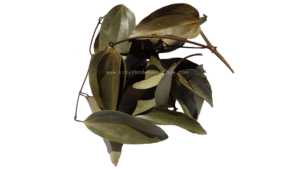Description
Cinnamon Leaves And Stick
Fresh Organic Cinnamon Leaves / Stick
Fresh Organic Cinnamon Leaves And Stick
Genuine Jamaica Products Guaranteed Authentic
Anti-bacterial The oil contained within cinnamon leaves may have anti-bacterial properties Cinnamon leaf oil contains compounds that promote the growth of healthy bacteria in your upper gastrointestinal tract that aid in digestion, as well as strengthens your immune system to fight against potentially harmful bacteria in your bloodstream that may cause sickness or infection. For this reason, cinnamon leaf oil has sometimes been used as a remedy for the common cold or flu.>
What is cinnamon leaf good for?
10 Evidence-Based Health Benefits of Cinnamon
Cinnamon Is High in a Substance With Powerful Medicinal Properties. …
Cinnamon Is Loaded With Antioxidants. …
Cinnamon Has Anti-Inflammatory Properties. …
Cinnamon May Cut the Risk of Heart Disease. …
Cinnamon Can Improve Sensitivity to The Hormone Insulin.
Cinnamon Leaves And Stick
Is cinnamon leaf bay leaf?
Indian bay leaves, cinnamon leaves, cassia leaves, or tejpat/Tej Patta in Hindi. Longer and wider than bay laurel leaves, they come from the same family but are less woodsy and piney in flavor and more akin to cinnamon and cloves. … Other Common Names: Tejpat, Cinnamon Leaves.
How do you use cinnamon leaves?
They are used to flavor stews, pilafs, and curries, and dried Cinnamon leaves can often be substituted for bay leaves in many recipes. In Jamaica, Cinnamon leaves are traditionally used to flavor cornmeal porridge and jerk marinades. Cinnamon leaves are also used as a flavoring agent for baked goods and desserts.
How do you make cinnamon leaf tea?
The easiest way to make this beverage is to simply add 1 teaspoon (2.6 grams) of ground cinnamon to 1 cup (235 ml) of boiled water and stir. You can also make cinnamon tea by steeping a cinnamon stick in boiling water for 10–15 minutes.
Cinnamon Leaves And Stick
Can we drink cinnamon water daily?
One of the best ways to extract all the goodness from cinnamon is to soak the stick in water and sip on it on a regular basis. Backed by various health experts, cinnamon-infused water makes for a wonder drink that has innumerable healing properties.
Is cinnamon bad for kidneys?
In conclusion, cinnamon has no adverse effects on the physiology and morphology of normal healthy kidneys, therefore its use is safe for kidneys.
What is the difference between cinnamon and bay leaves?
No. Bay leaves are from what we call a European Bay Tree (Laurus nobilis). The confusion is caused by the fact that Tejpat (leaves of the cinnamon tree – Cinnamomum zeylanicum ) is colloquially called “Indian Bay Leaves”.
Cinnamon Leaves And Stick
How much cinnamon tea can I drink a day?
About 1 cup per day (1 tea bag in 8-12 oz of water) with rest on the weekend should do it. It combines all the benefits of black tea with cinnamon in a fabulous tasting Tea. Our Ceylon Cinnamon Tea is infused with Cinnamon Bark Oil, which has cinnamaldehyde. About 1 cup of Cinnamon Black Tea in the morning is perfect.
How much cinnamon do you put in coffee?
For a subtle cinnamon flavor use one teaspoon for a pot of coffee. If you want more cinnamon flavor, you can add up to two teaspoons. When serving this coffee, I like to have brown sugar cubes, cinnamon sticks, and a variety of milk on hand. If you want to be extra indulgent, whipped cream is delicious too!
Cinnamon Leaves And Stick
How much cinnamon do I take to lose weight?
It’s best to purchase Ceylon cinnamon, but if you consume the Cassia variety, limit your daily intake to 1/2 teaspoon (0.5–2 grams). You can safely consume up to 1 teaspoon (about 5 grams) of Ceylon cinnamon per day ( 46 ).
Can cinnamon keep you awake?
New York – To stay alert behind the wheel on long road trips, skip the coffee and try sniffing peppermint or cinnamon. Researchers from West Virginia have found that getting a whiff of pleasant odors periodically while driving increases alertness, reduces fatigue, and even lowers drivers’ anxiety and frustration.





